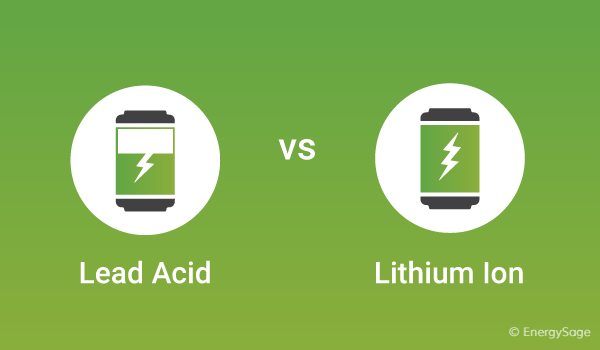
Lead-acid vs. Lithium Battery Comparison
Lead-acid vs. Lithium Battery Comparison
Lead-acid batteries cost less up front, but they have a shorter lifespan and require regular maintenance to keep them running properly. Lithium batteries are a larger upfront investment, but they are maintenance-free and have a longer lifespan to match their higher price tag; a lot more cost-effective over their life cycle.
Lead-acid is a tried-and-true technology that costs less, but requires regular maintenance and lasts one third, if not less, than Tesla lithium units.
Tesla – Lithium is a premium battery technology with a longer lifespan and higher efficiency, but you will need to pay a bit more money for the boost in performance.
Lead-acid vs. Lithium Solar Batteries: The Basics
When you build a solar system, you have three main battery options:
Flooded Lead-Acid (FLA)
The distinguishing feature of FLA batteries is that their plates are submerged in an electrolyte solution. These must be checked regularly and re-hydrated every 2-3 weeks to keep them working properly.
Falling behind on upkeep can shorten the life of the batteries and void the warranty. FLA batteries also need to be installed in a ventilated enclosure to allow toxic battery gases to escape.
Sealed Lead-Acid (SLA)
SLA batteries come in two types, AGM (Absorbent Glass Mat) and Gel, which have many similar properties. They require little to no maintenance and are spill-proof.
The key difference in AGM vs. gel batteries is that gel batteries tend to have lower charge rates and output. Gel batteries generally can’t handle as much charge current, which means they take longer to recharge and output less power. GEL batteries are good for regions that may experience freezing conditions; in the tropics, we have no such weather
Lithium
The best lithium battery chemistry for solar applications is Lithium Iron Phosphate, shorted to LiFePO4or LFP batteries. This new technology lasts longer and can be put through deeper cycles. They also require no maintenance or venting, unlike lead-acid batteries.
Lithium batteries cost more up front, but the extra efficiency means you can potentially spend less per kilowatt-hour of capacity over the lifespan of the battery.
It is important to note that just as no two Alkaline battery cells are alike in quality, the same is true for solar Lithium based units. Protect your investment by buying reputable brand names such as Tesla.



